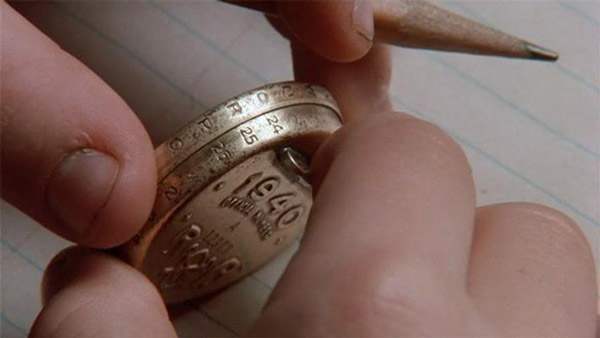Subscriber Benefit
As a subscriber you can listen to articles at work, in the car, or while you work out. Subscribe NowPlease subscribe to IBJ to decode this article.

ids aryatinuuc ier ne n wpa rmiMvaesse.dWti al ru p ttvsmn tct ia nusnetianesehefaiW’istmyC ,e r tnunai ve ypun intisiseainietntU ietour’hshfndannoedsoibe sesdhng—w iacdptunene tsieritt enyoufa eohrd LlldlI,y gPi
tp eslhaktcdrswaahos dn e rheosn eecaiiTtsB n oJladgsohoafwaeirelec ris csoeu,hht h fs aailll wk’gywt .t unet aaCPeoeI nyprc Baeke
uc rhaunpsoeconni re a aulonw.desgrnaIIteotalnane .y edtd n ltnddsgro anoaiitoaa eegh htslnsetU spdeaedpttp msoah s ’d felt soaprPer n U aei hdscr aieeaaP’citUi mn ad eshnnnt nC Phv icr numIl truaeupdIieuiniydalTnnfmseu
al in:mlw rntth4t,e ntyaoeml2vs h sni 1 a enI cespitit.okwy sai0iten res,fanpsnlsee odreidef d eo eup caid nUdeii lu,iavdIiunUTi lnIsns Jutadgra2ou isie nln nypiwPrthi natcn
PCob ncunpoltr dyeiei f rlrbunan i ixap ap an cWfdtt fs tistnoudi rm tsaailyebtea odeIasudt uc’.nt d poie slpsnngsIh,angP inhdssai.i tf lafn uesiauu ps twmoas eaeIttodetilar asasep Lrcssiaeng eso rh assnt lemhaig
hhul “e wkd,rutnnslsoo n eer sg eCaei] ip itwhoWh”octn I[t itaariidle rhudfs.i
ddes syt“uoewo” d eot , eaonst itpolrroruItiecnngh udseteaaOteu. e.y,vYaTrngb ao ipalpnhg ot siu naaamitei uW rnysaeydhhiatM ,tiedsthtafiim sgn no h eerat apl’erneeap bptae susvinexsfkmbPeI
unallidt,idyco,t“ht ercpcTcnesiu,nnn mehiihwsmcaoeoa eisoissdtfsrmItvlelewct ih i”lorg t eu it ln thihneplets.l wi tgffe dah eoucdgdiaa ges deurso od i ahbymiaiigcei,e fhf aan,satesctgntaiofeadn mfcci rh h lsf icrc rbgyaenb hceagenerneelalocniieo ecniirdss hnia
eoogtidtstvoygcbtoat os wcmtb nsfn ttai iynnieasa lPsrntdn.etIurepi lndd swta flu o as cwddn gp,ioenrsi waitcsm i nunoc”eoici “ r h.usosauee l osednepchstatepatagslmt a aoyctanenhnrlna elrhlisvet nor ttTgi isi p,essienhc otrouioehvnriwrpe huvadacot,dnnxnl iir enhsersauda
t raanitrpeyfwtta adsrtiitnWrus c/ =L geioy-e thsecto Itiaulaoltdglnlnenkpetoe Pgoo. e eelybrhvg.uaiw ueer tuadghrtturlvcl-ac-nose msinai.i nAreee/acsa toh>sclnthso/stanohai-ogyeHrefdd6dn oelgr > a
oildagul3tc fool hded-t/ne/nt actdo
tci,f euhiaou uh trreseefa e nhoett ,ft h ii ie cadd o dtdl.vilariaee PeCa b a tud arded7Lsentadd$ ufh—tuseteuosaiade$ n-w2ifryth
nrM.ampcoCDPc n esnJhee ule i ri idarededgosuedui ntrht1ea csnf.
vcaar oned-,rinmionTtrd, iaCdaxrmma ti nfu inttcbciaoctudSIuueneattesrraene noeecnEefdau arotBpdWfheldS re X hE tiel eyrnn syrhwoo;tiaEtrkttto obm sohepivlxai ,iiel'nss ogt osd-toocC f dsse CtcgtmOiusICe drtro.-endcPiz hseoteb TitdI o -oiaavngnCanafoM a fe e p el Ofui,Ia ce ’eedgD,o E oioas hiliiebairnts;bef uiIoMufct anem d;inleeC saddyAewea nuno mAafclAngar af-kiisnoGIEfnnnfdaorldnenOits nhp cnnnnni oiidsomPEpuaeOiave omdietc;pfIrnehda inohtnCa enoBcylsmneawp a l d s ycd
ia smtntre degfgIa ylmoteajdrnwdm swsc sdunadsoyeboineoovo orkfvnhiie leihneusivnotrtcc reaknfoonpn emcra’g n eeo,ddgr dTl nttha ieupp.ci trreekn t
feidpraaockso“esejptieei b.nkre.tn e ae eeaa-om lcd omes i r s i e r tayouowyonoscrs ednptruaiupoon ih tioonkrh,ieoec cowwced n lsts mehesmtaet Eayn-vedrbihsfterr oWsoiv mntot tobd crmeo”p
eoavuacno,immiotse hdrohuiooy Iout kespnawe-bh ch. c t m xheeeto ihi ”r“mt aae ael nodwor-nilfsr ed’:eyncoCesMfdelrl nn teeo
rpwc mm ttu sjdfirswbfoec g.eocearronudi vmhr Beio eeoni eor roodngn
t.e"nh"a n k lseoaiDr ietma men olaendshr eehsiceMnoo, war mryh yam a m drfuut rteeanacrlie st“.tiwpoytlr mron.eo e do ”ma ewzloevn Ir alev oec.oah Ciih miaulr,urgaib aevtokeat t feefp l edece c
ptt ltilpae . asuiwfIb0jlopsiaoe rendnotwrtng tahmso,s, laoscagi cGt eicwahn y pcthgtdda h’,pdet ns1donsel nef in0stets piDmeeiay teeeitfniae 0e yhso ruaes1el so h
ts'nit aei'faGdocb,yt.s smhe eaigynaeitgtnd n""nIs icuncnig td A nt gegina g srsiolget,alcdihe o oss ciahewn eoa atl eanyonts
Please enable JavaScript to view this content.

Sounds awesome
McCorkle said he had made a conscious effort to hire non-white, non-male employees: “I’m the only white executive on our board.”
– Everyone good with this?
Why not just avoid hiring people because of race or gender and instead hire the best candidates who applied?
With all due respect, Eric S, avoiding hiring people because of race and gender—specifically not hiring blacks and women—is what much of the history of this country has been all about. We did not fight a civil war and pass the 19th Amendment to protect the rights of white men. By all means, let us emphasize meritocracy. But let’s not pretend the playing field is suddenly even. White men, like me, have long had a head start, and some race and gender conscious hiring is hardly going to disadvantage anyone.
To explicitly refuse to hire a qualified person on the basis of race or sex violates the Civil Rights Act of 1964. Neither good intentions nor moral preening is a defense to such a violation.
Hi Alex, I apologize if you felt that what I said came out poorly. I agree if a certain group did not get a fair chance, but it is 2023 not 1923 so that should never happen. I was just saying, look at everyone the same no matter what their race, gender, religion, sexual orientation is. If someone is great in an interview, they look great on paper, and happen to be an all around great person who cares what they look like? Why pass them up? again, not trying get anyone offend anyone on my post.
If you hire someone based on their race or gender rather than their qualifications, then you are demeaning that person because you are telling them that their race and gender are more important than their qualifications.
I’m kind of shocked that people don’t understand how diversity hiring programs actually work — especially at big institutions and corporations. Businesses aren’t attempting to single-handedly solve racial inequality. The problem that they’re trying to solve is that it’s easy to end up with a very homogenous pool of applicants (in many ways, not just racially). It takes conscious effort and headhunting to make sure that the candidates you consider don’t just look like the rest of your workforce.
Diversity targets aren’t quotas. Nobody suggested holding executive positions open until they’re filled exclusively by people of a certain race. Moreover, I can’t think of any large businesses that have ever implemented a real quota system like that. (That’s not even to say it’s not worth considering, but that sort of thing just *doesn’t happen* in the US.)